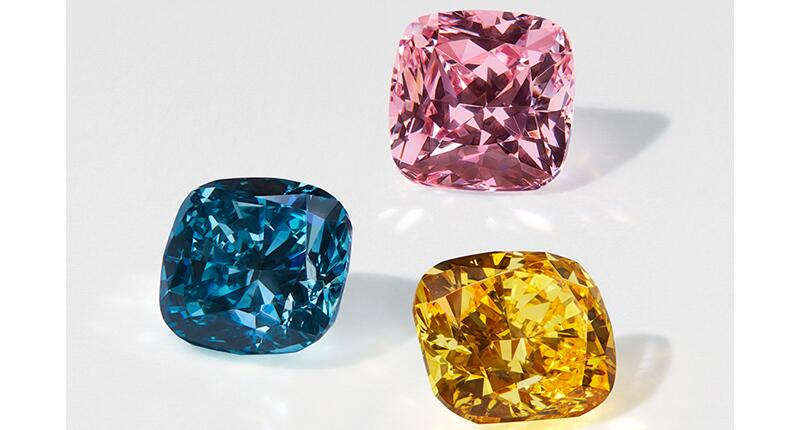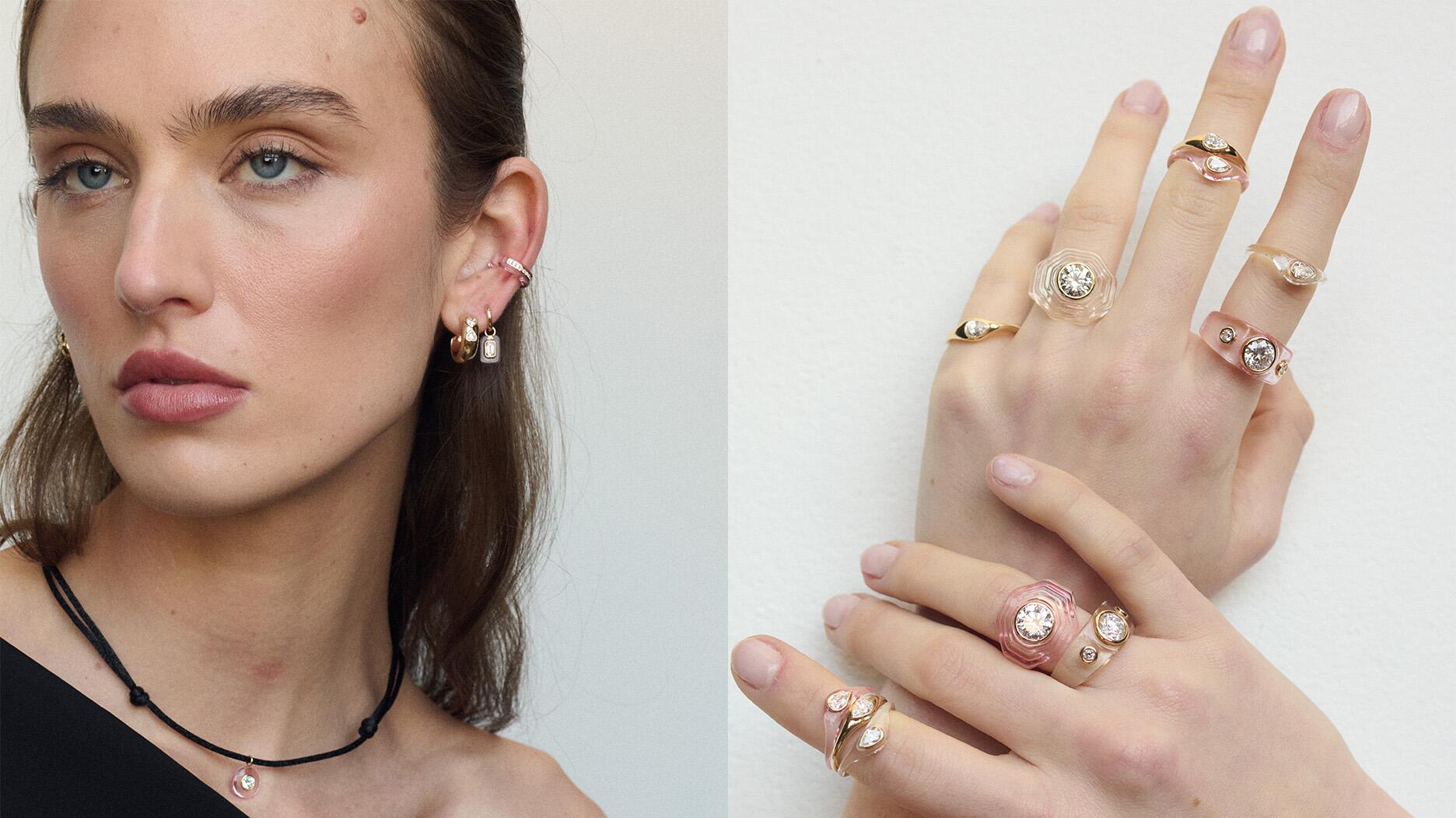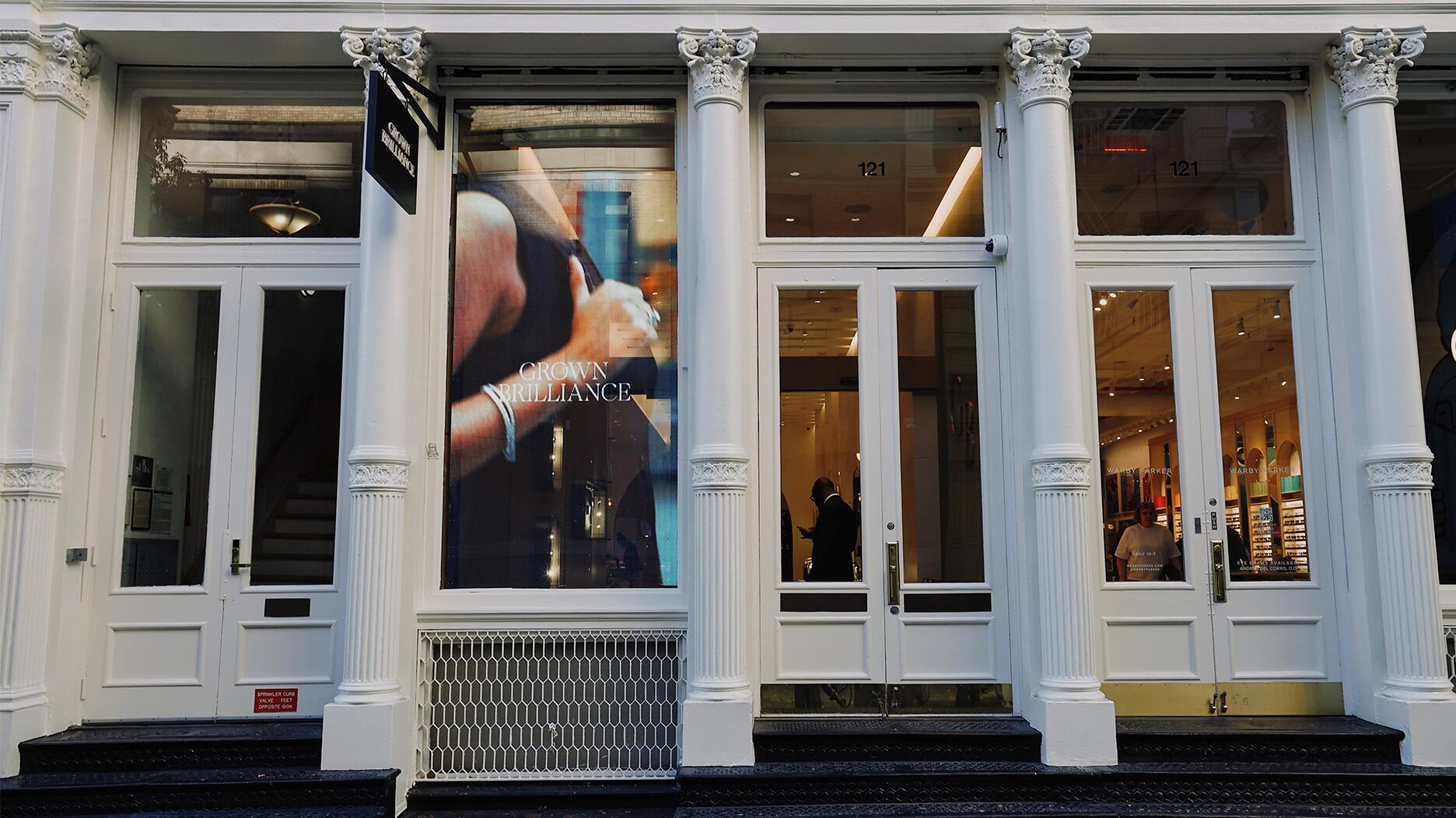Measuring the Lab-Grown Diamond Market: Size, Growth, and Future Opportunities
National Jeweler talks to two analysts about market share and where the stones go from here.

The category slowly has been building in market share as production ramps up and more consumers opt for a man-made stone, with the U.S. market being the largest by far for the products.
To put the current market size and near-term prospects into perspective, National Jeweler spoke with independent industry analysts Edahn Golan and Paul Zimnisky.
Both use their own research and analysis to create the data shared below, which is based on their estimates and forecasts.
An Upward Curve
Looking at the market over the past five years shows an interesting growth curve.
Prior to 2018, lab-grown diamond jewelry sales totaled less than $1 billion, representing less than 1 percent of the total global diamond jewelry market, Zimnisky estimates. (Though these are global figures, Zimnisky noted that the U.S. makes up the majority of the market—more than 90 percent.)
Golan’s estimates for 2018 have lab-grown diamonds accounting for less than 1.5 percent of all diamond sales by specialty retailers in the United States.
By the following year, that had crept up to more than 2 percent, he said, and it’s continued to grow, especially as more producers, like De Beers with its Lightbox brand, have come online.
By 2020, the stones’ market share had increased to about 3.5 percent, and last year it neared 5 percent, indicating continued growth in consumer awareness and acceptance of the product, Golan said.
Overall, Golan said lab-grown diamonds were a $3.9 billion business in the U.S. in 2021.
Zimnisky’s estimates for the market are more bullish.
His research indicates that in 2021, global lab-grown diamond jewelry sales totaled approximately $5.9 billion, representing 7 to 8 percent of the total diamond jewelry market.
According to these two experts, there’s no doubt the lab-grown diamond market will continue to grow, especially as producers ramp up supply and major retailers, like Signet and Pandora, continue to increase their lab-grown diamond inventory.
“All things being equal, a 7 percent share in 2022 is not an unlikely scenario,” Golan said.
Zimnisky, meanwhile, said lab-grown jewelry sales could near $8 billion-plus in 2022, approaching 10 percent of the total diamond jewelry market, and near the $10 billion mark by 2023.
Bridal vs. Fashion
One of the biggest conversations around lab-grown diamonds is, what will consumers buy them for, exactly? Bridal or fashion jewelry?
Currently, about 60 percent of lab-grown diamond sales by value at specialty jewelers are bridal, according to Golan, who noted that’s largely because engagement rings generally cost more than fashion pieces.
But when one looks at the market share by number of units sold (volume), bridal and fashion are evenly split at 50-50, he said.
Golan also noted the ratio of lab-grown diamond sales at larger retail spaces, like Macy’s or Amazon, is very different because consumers tend to shop there for fashion jewelry more than bridal, further indicating that, in the U.S., lab-grown diamond bridal jewelry doesn’t have such a large share.
“I think self-purchase is probably getting to be the biggest segment of the market and a lot of that’s fashion jewelry.”—Paul Zimnisky
Zimnisky said while the lab-grown diamond market has seen the lion’s share of its opportunity in bridal so far, it will start to occupy more in fashion jewelry in the coming years.
“I think self-purchase is probably getting to be the biggest segment of the market and a lot of that’s fashion jewelry,” he said, adding that big companies like Pandora and Lightbox are positioning them as fashion products as well.
Pricing could also influence this potential trend, he said.
As lab-grown diamond prices keep dropping—as they have been for a few years now—it’s likely more lab-grown diamonds will be marketed as fashion jewelry.
Pricing and Its Effects
Lab-grown diamond prices fell last year, while natural polished diamond prices rose by about 30 percent, Zimnisky estimated, widening the gap between the two categories.
Better methods among growers and competition among wholesalers will lead to a continued decrease in prices, both analysts agreed, and it remains to be seen when lab-grown prices will bottom out.
Right now, generic lab-grown diamonds are priced as much as 75-85 percent lower than natural diamonds of the same quality, Zimnisky said.
He said lab-grown diamonds likely will end up being priced similar to Lightbox, which has a linear pricing system based on size ($800 for a 1-carat diamond, $400 for a half-carat diamond, etc.).

The widening price gap also plays a role in one big question on everyone’s mind: Are lab-grown diamonds taking away from sales of natural diamonds?
Just a few years ago, when lab-grown diamonds were priced 10 to 15 percent less than comparable natural diamonds, “almost all of those lab-grown diamond sales were probably taking sales away from natural,” he said.
But now that the price gap has widened, there are probably many consumers buying a lab-grown diamond that wouldn’t have considered a natural diamond of the same quality because the price is so much higher. In other words, lab-grown diamonds are potentially finding new consumers.
Ultimately, though, market share and growth will depend on one important aspect, both analysts agreed—marketing.
“It’s still a luxury product. It’s an emotional purchase, and people buy it because they like the way it makes them feel. And I think that’s where the marketing kind of really comes into play,” Zimnisky said.
“I think the natural diamond industry can really protect its market if it’s successful with proper marketing. And if they aren’t, then I think that there’s serious risk there.”
The Latest

The special-edition egg pendant ingested in a New Zealand jewelry store was recovered after a six-day wait.

Associate Editor Natalie Francisco plays favorites with Piece of the Week, selecting a standout piece of jewelry from each month of 2025.

The “Love and Desire” campaign is inspired by the magic that follows when one’s heart leads the way, said the brand.

How Jewelers of America’s 20 Under 40 are leading to ensure a brighter future for the jewelry industry.

Two awardees will receive free tuition for an educational course at the Swiss lab, with flights and lodging included.


Berta de Pablos-Barbier will replace Alexander Lacik at the start of January, two months earlier than expected.

Sotheby’s held its first two jewelry sales at the Breuer building last week, and they totaled nearly $44 million.

Roseco’s 704-page catalog showcases new lab-grown diamonds, findings, tools & more—available in print or interactive digital editions.

Winners will receive free registration and lodging for its fourth annual event in Detroit.

Here are six ideas for making more engaging content for Instagram Reels and TikTok, courtesy of Duvall O’Steen and Jen Cullen Williams.

The honorees include a notable jewelry brand, an industry veteran, and an independent retailer.

Carlos Jose Hernandez and Joshua Zuazo were sentenced to life without the possibility of parole in the 2024 murder of Hussein “Sam” Murray.

Yood will serve alongside Eduard Stefanescu, the sustainability manager for C.Hafner, a precious metals refiner in Germany.

The New Orleans jeweler is also hosting pop-up jewelry boutiques in New York City and Dallas.

Set in a Tiffany & Co. necklace, it sold for $4.2 million, the highest price and price per carat paid for a Paraíba tourmaline at auction.

The jeweler’s “Deep Freeze” display showcases its iconic jewelry designs frozen in a vintage icebox.

Take luxury gifting to new heights this holiday season with the jeweler’s showstopping 12-carat sphene ring.

This year's theme is “Unveiling the Depths of the Ocean.”

In its annual report, Pinterest noted an increase in searches for brooches, heirloom jewelry, and ‘80s luxury.

Starting Jan. 1, customers can request the service for opal, peridot, and demantoid garnet.

The 111-year-old retailer celebrated the opening of its new location in Salem, New Hampshire, which is its third store in the state.

The new catalog features its most popular chains as well as new styles.

The filmmaker’s personal F.P. Journe “FFC” prototype was the star of Phillips’ recent record-setting watch auction in New York.

The new location in the Design District pays homage to Miami’s Art Deco heritage and its connection to the ocean.

Inflations, tariffs, and politics—including the government shutdown—were among consumers’ top concerns last month.

“Longtime favorite” presenters, as well as first-time speakers, will lead talks and workshops at the annual event in Tucson next year.

Silas Smith of Meridian Metalworks won the challenge with his pendant that blends Australian and American landscapes.





























